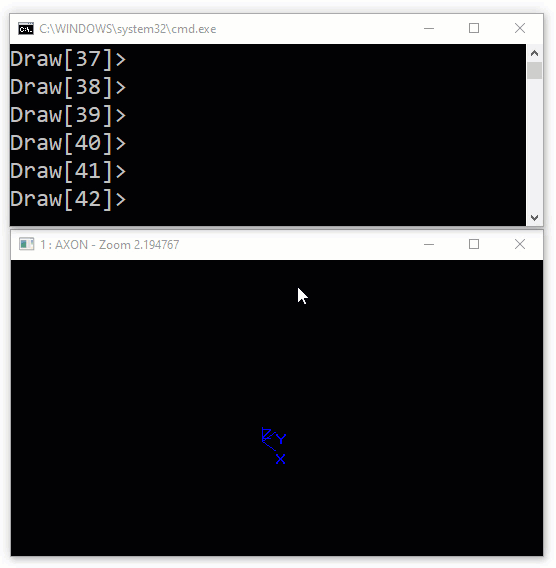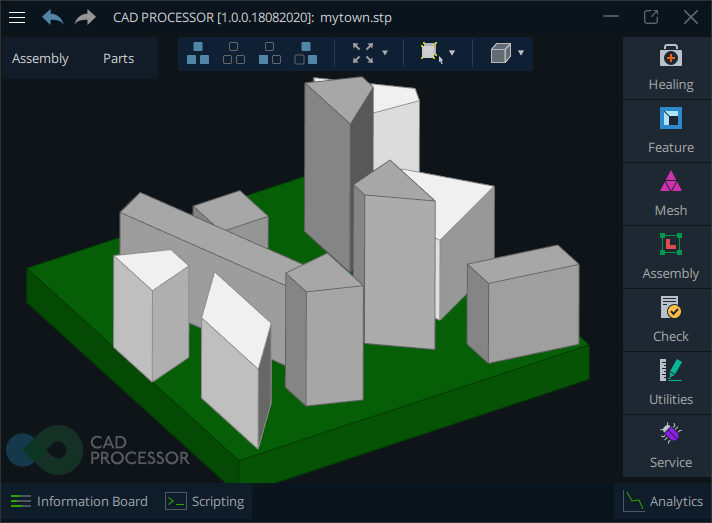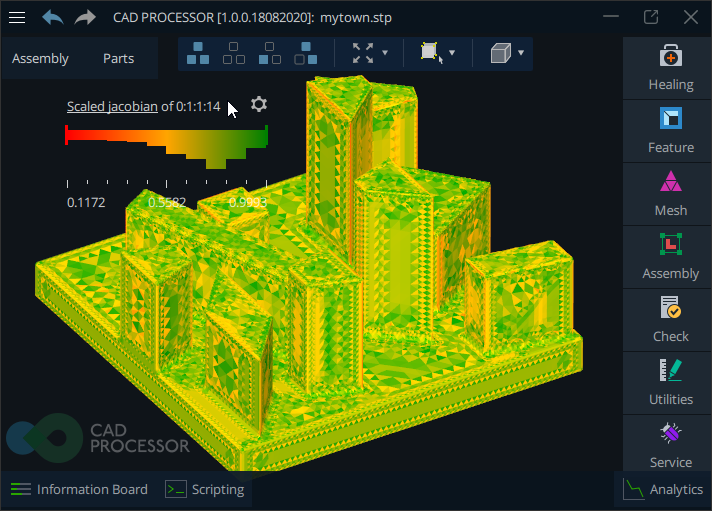Build a prismatic block in OpenCascade
The following procedure builds a solid trapezoid block in the Draw console of OpenCascade:
proc buildBlock {resname L0 B0 a1Deg a2Deg height} {
global $resname
set Pi 3.1415926535897931
# Design variables.
set a1 [expr $a1Deg.*$Pi/180.]
set a2 [expr $a2Deg.*$Pi/180.]
set V1x [expr -$L0/2 - tan($a1)*$B0/2]
set V1y 0
set V2x [expr $L0/2 + tan($a2)*$B0/2]
set V2y 0
set V3x [expr $L0/2 - tan($a2)*$B0/2]
set V3y $B0
set V4x [expr -$L0/2 + tan($a1)*$B0/2]
set V4y $B0
# Build topology.
vertex V1 $V1x $V1y 0.
vertex V2 $V2x $V2y 0.
vertex V3 $V3x $V3y 0.
vertex V4 $V4x $V4y 0.
#
edge e1 V2 V1
edge e2 V1 V4
edge e3 V4 V3
edge e4 V3 V2
wire w e1 e2 e3 e4
mkplane f w
#
prism $resname f 0 0 $height
}
# source create-block-01.tcl
# buildBlock b 130 60 20 45 30
# top; fit
 |
Parametric block in OpenCascade. |
This Tcl procedure defines a parametric modeling workflow. By "parametric" here I mean that the modeling algorithm exposes design parameters, therefore its logic encodes some design intent. This approach to parametric modeling is simple and stupid. It is opposed to constraint-driven design that traditionally employs geometric constraint solvers, such as PlaneGCS or SolveSpace (there is no in-house solver in OpenCascade). For example, the parametric sketches in FreeCAD and CAD Builder are based on the PlaneGCS solver developed by people from the FreeCAD community.
 |
Blocks composed to a simplistic model of a city. |
Although simple, this technique of modeling has a practical value. For example, one can easily compose a simulation model of a city environment aimed at subsequent wind comfort simulation (like in the application of Ingrid Cloud). The computational mesh can be generated with the help of a shrink wrapping.
 |
Scaled jacobian scalar field for the wrapped simulation model. |
Want to discuss this? Jump in to our forum.